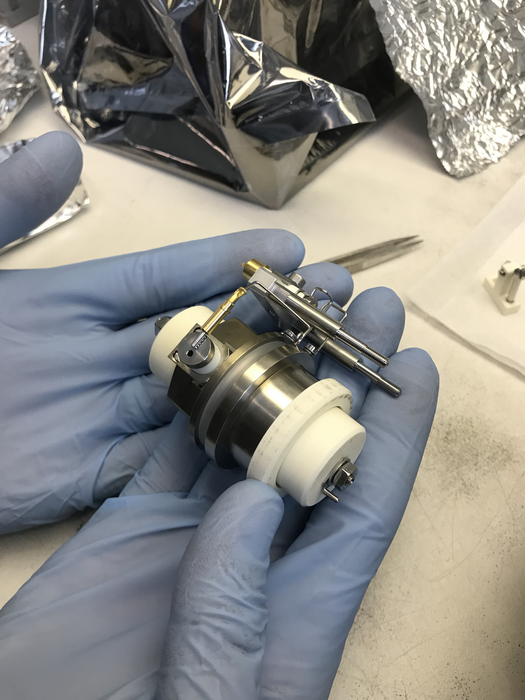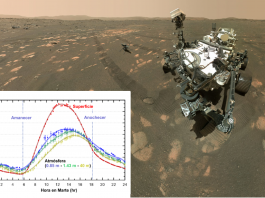A cutting-edge new laser device may be able to detect alien life on planets – a technological breakthrough that may answer the question, are we alone in the Universe?
As humanity forages increasingly deeper into the depths of space, more compact, resource-conserving, and accurate analytical tools will be critical for identifying potential alien life or habitable planets and moons.
University of Maryland researchers have pioneered such technology, developing a new instrument for NASA space missions. The team’s mini laser-sourced analyser is significantly smaller and more resource efficient than previous iterations while performing the same quality performance to examine planetary material samples and potential biological activity.
How does the new laser analyser work?
The new instrument weighs only 17 pounds and is a scaled-down amalgamation of two essential tools for identifying alien life and the composition of materials – a pulsed ultraviolet laser that removes small amounts of material from a planetary sample and an OrbitrapTM analyser that provides high-resolution data about a material’s chemistry.
Ricardo Arevalo, lead author of the paper and an associate professor of geology at the university, commented: “The Orbitrap was originally built for commercial use. You can find them in the labs of pharmaceutical, medical and proteomic industries.
“The one in my own lab is just under 400 pounds, so they’re quite large, and it took us eight years to make a prototype that could be used efficiently in space — significantly smaller and less resource-intensive, but still capable of cutting-edge science.”
The new technology shrinks the original Orbitrap and pairs it with laser desorption mass spectrometry (LDMS). Itboasts the same capabilities as its predecessors but is more streamlined for space exploration. These techniques have currently not been employed in an extraterrestrial planetary environment.

The technology could revolutionise future space missions
The mini Orbitrap LDMS instrument is so small and has low power requirements, meaning it could be easily stowed away on space mission payloads. Moreover, its analysis methods are far less intrusive and less likely to contaminate or damage samples than current techniques.
Arevalo explained: “The good thing about a laser source is that anything that can be ionised can be analysed. If we shoot our laser beam at an ice sample, we should be able to characterise the composition of the ice and see biosignatures in it. This tool has such a high mass resolution and accuracy that any molecular or chemical structures in a sample become much more identifiable.”
How will the laser help search for alien life?
The mini LDMS Orbitrap’s laser component enables scientists to analyse larger and more complex compounds that are more likely to indicate alien life. For example, smaller organic compounds like amino acids are more ambiguous signs of life.
Arevalo added: “Amino acids can be produced abiotically, meaning that they’re not necessarily proof of life. Meteorites, many of which are chock full of amino acids, can crash onto a planet’s surface and deliver abiotic organics to the surface.
“We know now that larger and more complex molecules, like proteins, are more likely to have been created by or associated with living systems. The laser lets us study larger and more complex organics that can reflect higher fidelity biosignatures than smaller, simpler compounds.”
The team is confident that the technology will provide unprecedented insight into our Solar System and could be essential on alien life detection missions, such as Enceladus Orbilander, and exploring the Moon’s surface. They are aiming to deploy the device into space in the coming years.
“I view this prototype as a pathfinder for other future LDMS and Orbitrap-based instruments. Our mini Orbitrap LDMS instrument has the potential to significantly enhance the way we currently study the geochemistry or astrobiology of a planetary surface,” concluded Arevalo.









